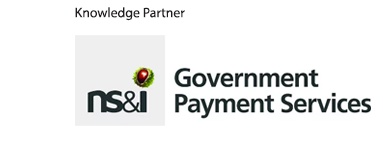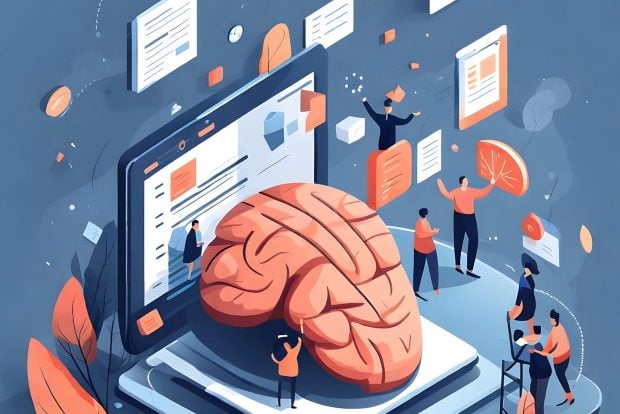US federal CIO Clare Martorana on ‘human-centred policymaking’ at the speed of AI

On the sidelines of the recent Innovation 2024 conference in London and ahead of the GovernmentDX event in Washington, D.C. later this month, Clare Martorana, the US federal chief information officer, sat down with Global Government Forum to discuss AI, turning policy into action, and harnessing talent to deliver better customer experience.
Just over three years since she was appointed as the US federal chief information officer (CIO), Clare Martorana is shifting gears.
“The first several years in this role, we were focused on policy design – actually getting these policies out the door, working across the ecosystem,” she comments. “Now, we’ve turned the page into implementation so everything that we are doing is focused on making sure we’re delivering, making sure that teams have the capabilities and the capacity to do the work.”
The key role of her office, which is part of the Office of Management and Budget (OMB) at the White House, is to take laws from Congress or executive orders from the President and “translate them for the federal ecosystem”.
“We have 430 agencies and bureaus in the federal government, and each one of them is at a different place in their modernisation journey,” Martorana explains. “So, it’s really important that we are working across those agencies to make sure that we can translate the guidance, the intention of the law or the intention of the executive order, into something they can actually execute and deliver improved services for the public.”
Major areas of focus include cybersecurity – “always job number one”, digital experience, using data as a strategic asset, and, of course, artificial intelligence (AI).
In October, President Biden issued an Executive Order on the Safe, Secure, and Trustworthy Development and Use of Artificial Intelligence – “the what” – and the policy – “the how” – was published by the OMB last week to guide how federal agencies use AI. It covers AI risk management and governance and outlines requirements for concrete safeguards and transparency measures. The policy isn’t only about risk; it also highlights the opportunities for AI to address issues such as the climate crisis, public health and public safety and urges agencies to “responsibly experiment” with generative AI. Expanding the AI workforce is an additional priority.
The creation of the AI executive order brought together a wide range of stakeholders – “the entire ecosystem”, says Martorana. This included civil society, academics, security personnel and labour unions to understand their fears, concerns and questions.
“We tried to be very thoughtful in the executive order to make sure that we’re dealing both with those issues that they are concerned about, but also that we were introducing them to other things that we work on very intently, like making sure bias is not introduced in any way,” Martorana comments.
Upcoming event: Register here now to attend GovernmentDX – free to public servants. This event will provide unprecedented insight for federal civil servants on how to provide better, digitally-enabled government services.
Human-centred policymaking
The work on translating legislation into practical guidance that people can use is focused on building on the principles of human-centered design to create what Martorana calls “human-centered policymaking”.
“Much of our policy tends to be written at a very high level, and with a thought process that everyone has everything that is needed to be high performing in executing on the guidance,” she explains. “That’s not true. Every agency is at their own place in their journey, so we’ve really tried to listen to them so that we can write guidance that recognises that there are certain challenges that each agency has to navigate.”
To understand where agencies are in their transformation journey, Martorana liaises closely with the 24 major federal agencies named in the Chief Financial Officers Act. These agencies are now required to establish AI governance boards.
They provide a “primary use case” for how to deploy policy, Martorana says. “It gives us a really important convening authority to be able to reach out to those 24 CFO Act agencies and really get a quick read of the ecosystem, and the immediate challenges that they face back to us. [This] helps us in thinking about that policy design that we do.
“And then we make sure that we’re extending our guidance [to the federal government’s smaller agencies] so that they can come along.”
Sign up for the monthly Global Government Forum AI Monitor newsletter
Developing AI governance for the federal government
When it comes to AI, agencies are “all over the spectrum”. Some have already been using AI for several years, while others are much further behind. There are also variations in the level of risk they are willing to accept or know how to manage.
Each federal agency must designate a chief AI officer, and these officers collaborate through a Chief AI Council, which is chaired by Martorana.
She says: “What we’re doing through that structure of the chief AI officers is designing a governance system in the agency, so that it is not just a CIO’s job to manage software that would be related to AI; it’s everyone’s job to manage the risk related to it.”
This approach is intended to provide a broad feedback loop to ensure that AI use doesn’t introduce bias into government processes, and to make sure its use is communicated transparently with the public – “all things that are really cornerstones of the Biden-Harris administration”.
“So that governance structure happens at an agency level and then it’s happening at the higher level, through the Chief AI Officer Council,” Martorana adds.
This structure is also important for agility, she says: “I think that we’re moving so quickly with AI that we are having to be much more nimble.”
Read more: AI takeaways from Innovation 2024; UK and US join up on AI safety; and more: GGF AI Monitor
Building government services that meet people wherever they are
And it is not only in artificial intelligence where Martorana’s efforts are moving towards implementation. Last September, the White House issued policy guidance on how to help federal agencies deliver a digital-first public experience, and now implementation is underway here too.
The focus is ensuring that government can “meet our customers’ expectations”, Martorana says. These expectations are rising as people become ever-more familiar with slick consumer experiences.
As Martorana puts it: “I can have my salad delivered, know within two feet of where it is, and the name of the person handing it to me.”
These standards mean that people “expect things to work in whatever channel they want to approach you in”. So digital is important but is not the whole story. “It’s an omnichannel experience and we want to make sure that we meet the person where they are.”
Now, a “lot of housekeeping” is being undertaken to streamline and update unused or out of date government websites and pages.
Giving people the right information is key to building trust. “We’re trying to be very deliberate in making sure we have accurate customer content and that the content is search engine-optimised,” she adds, noting that when people search: “You want one answer and you want the right answer that’s accurate, credible, timely and relevant.”
The importance of this approach is only going to grow as artificial intelligence’s use through chatbots expands. “Large language models are trained with available information,” says Martorana. “So, if we have data on a website that maybe is seven, eight, nine years old, and hasn’t really been updated, that’s actually informing how AI models are being built.”
Shared services are also supporting agencies to build websites and digital services in a more modern way. User research found that often people don’t notice the .gov suffix in website addresses, especially as more content is accessed on mobile devices, so the guidance places a greater emphasis on visual design.
“Gone are the days of the bespoke website that has your own beautiful graphics and your own logo,” says Martorana. “We need to simplify in many ways.”
The US is taking some inspiration from the UK government’s GOV.UK model of “having the key services available in plain language and really easy to navigate. Not trying to boil the ocean, but really focus on the key interactions and making sure the visual design is consistent”.
Martorana also sees potential to work more closely with Congress on customer experience, such as using constituent feedback to flag common and priority issues and address them faster.
“The constituents that complain to a member of Congress are also our customers,” says Martorana. “It’s all the same ecosystem.”
Finding talent
According to Martorana one of the obstacles for agencies in meeting customer expectations is sourcing the right talent.
Expertise is needed in areas including digital and engineering, product management and user experience. Martorana highlights that these skills can come from hiring, or through upskilling and reskilling the existing federal workforce. The latter group “are the people that are currently powering the mission and they have so much knowledge and so much experience” that can be harnessed, she notes. “They just might not be quite as fluent in some cases as somebody who just built a product at a big technology company.”
With layoffs in the tech sector in recent months, some US federal government agencies have worked to bring in additional talent.
Martorana sees other motivations too: “I think people want to serve, people want to join government, they really love the mission and know that their skills can really help transform.”
However, she admits that “sometimes we have not made it as easy as possible to find the way in” to government, so this is being worked on. For example, a simple government jobs page has been launched on the CIO Council website with information tailored to applicants’ experience levels. There are also talent initiatives in cybersecurity and AI – the administration has committed to hiring 100 AI professionals by summer 2024. An additional strategy is to ‘match’ up digital natives coming fresh into federal agency roles, bringing new ideas and agility, with those who have been in their positions for longer and have a deep understanding of the government system.
Another important issue to ensure good customer experience is “consistent investment”, Martorana notes. “You don’t launch something once and then you’re done. You have to constantly iterate with that product and on that service.”
Keeping systems up to date is also key, as Martorana explains: “We have a lot of legacy IT that has served us extraordinarily well; we have some systems that are 50 years old, and they’re operational every day. Brilliant, but we need to move them into a modern environment where you can secure them, you can patch them, and you can add multifactor authentication to them so that they are secure.
“That is really critical and I do see that getting a little bit of the short end of the stick. People want to invest in the new fancy things so that they can look at something that works and the front end is really important but I am focusing a lot of energy on the back end, making sure that we are getting the investment over time to modernise those older systems and bring them into the 21st century.”
Read more: Taming the tiger: national digital chiefs on the powers and perils of AI
Quantum leap
Generative AI has served as a reminder of how fast technology can usher in change, and Martorana reflects that CIOs need to keep a lookout for what might be coming down the pipe.
“We are constantly balancing the today and 5, 10, 15 years from now,” she says. “We’re doing an enormous amount of work on quantum computing, which will be with us at some point in the future. We don’t know exactly when, but we’re dedicating an enormous amount of resources and thinking to that so that we can be strategic about what is potentially in the ecosystem.
“It’s a balancing act [but] our strategies are focused on technology continuing to move very quickly.”
In the spirit of this balance, she stresses that it’s equally important to not be too distracted by the latest shiny thing: “The analogy we use in the US is like when little children play football and they all run after the ball. Sometimes we’re all running after the ball. So, [it’s] trying to set a strategy and keeping aligned on your strategy.”
Next month (April 18 and 19), the Government DX conference is taking place in Washington, D.C. This unique event from Global Government Forum brings together senior leaders from across the US federal government and from around the world to discuss challenges and solutions for implementing change in government.
As well as sharing experiences from the US side on cybersecurity, data, digital experience, AI and quantum computing, Martorana is also looking forward to the opportunity to learn from global peers.
“I know lots of people in the US civic tech community have for many years been watching GDS [the UK’s Government Digital Service], they’ve been watching Estonia, they may be now have been introduced to Iceland, but they’re [only] reading about it,” she says. “Hearing from the leaders directly, seeing that they’ve gone through the same challenges and obstacles, but that they have a North Star and they’re following it, and the citizens of their country are benefiting from that – I think that’s really inspirational.”
Register now for GovernmentDX – FREE to public servants
GovernmentDX on April 18, 2024, unites technology leaders and public servants to explore technology and innovation for delivering high-quality public services for customers. An exclusive roundtable follows on April 19.
This event will provide unprecedented insight for federal civil servants on how to provide better, digitally enabled government services. Register here now to attend GovernmentDX.




















